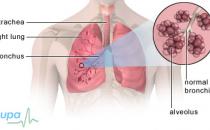BALANITIS
Balanitis is inflammation of the head of the penis (glans). Often the foreskin is affected, and the inflammation can spread down the shaft of the penis.
About balanitis
Symptoms of balanitis
Complications of balanitis
Causes of balanitis
Diagnosis of balanitis
Treatment of balanitis
Prevention of balanitis
About balanitis
Balanitis is swelling (inflammation) of the head of your penis. Balanitis can be acute or chronic (lasting for more than a few weeks) or recurrent. When describing an illness, the terms ‘acute’ and ‘chronic’ refer to how long you have had it, not to how serious the condition is.
Symptoms of balanitis
Symptoms of balanitis may include:
- a red rash at the tip of the penis – this may be scaly or ulcerated
- pain, tenderness and swelling at the tip of the penis
- itching and discomfort
- discharge or pus under your foreskin – this may smell unpleasant
- being unable to pull back your foreskin
If you have any of these symptoms, see your doctor.
Complications of balanitis
If you can normally pull back your foreskin, you may find that you can no longer do so. This condition is known as phimosis and is more likely to happen if your symptoms last a long time (chronic balanitis) or if they keep coming back (recurrent balanitis).
Also, swelling at the tip of your penis can push on your urethra (the tube that carries urine from the bladder and out through the penis). The swelling can make it painful to urinate.
Causes of balanitis
There are several causes of balanitis including the following.
- Contact dermatitis – skin irritants such as soap, shower gel or latex in condoms can irritate the head of the penis and cause balanitis (irritant-contact balanitis).
- Medicines – certain types of painkillers, sleeping tablets, laxatives and antibiotics can cause balanitis. These are called fixed drug eruptions.
- Infections – certain bacteria and yeasts such as Candida albicans live naturally under your foreskin. Heat, stress, poor genital hygiene or even using soap to clean the genital area can unbalance the acid levels and cause the bacteria to grow faster than usual. This can cause balanitis.
- Injury – any cuts or grazes in the tip of your penis or foreskin can sometimes cause balanitis.
- Lichen sclerosis – this is an inflammatory skin condition that affects the foreskin. It can cause the foreskin to become tight and difficult to retract over the head of the penis (phimosis) and cause balanitis.
- Diabetes – people with diabetes are more susceptible to infections. An infection under the foreskin can cause balanitis.
Diagnosis of balanitis
Your doctor will ask about your symptoms and examine you. He or she may also ask you about your medical history.
Your doctor may take a swab from the tip of your penis. The sample will be sent to a laboratory to check for bacterial infection.
Balanitis can sometimes indicate that you have diabetes. If you have recurrent balanitis, your GP may ask you to have a blood test to check for diabetes. Your doctor may also test for sexually transmitted infections.
Treatment of balanitis
Your GP will advise you to keep the head of your penis and foreskin as clean as possible, and not to use anything that might irritate the area, such as perfumed soap.
Self-help
It’s important to clean your penis twice a day. Don’t use perfumed soaps or shower gels, just water alone. You could also try using an aqueous cream (eg E45 cream) to soothe and clean the area.
If you have irritant-contact balanitis, once you stop using the product that is causing the irritation, symptoms usually clear up. However, they can come back if you start using the product again.
Medicines
If an infection is causing your balanitis, your doctor may prescribe an antifungal cream, antibiotics or a mild steroid cream.
- Antifungal cream – clotrimazole cream (eg Canesten) is usually prescribed to treat candidal balanitis. This should be applied twice a day until your symptoms settle. Alternatively, you may be prescribed fluconazole, a tablet to take once as a single dose.
- Antibiotics – flucloxacillin (eg Floxapen) or erythromycin (eg Erythrocin or Erythroped) are usually prescribed to treat bacterial balanitis.
- Steroid cream – this may be prescribed to help reduce swelling.
Always read the patient information that comes with your medicine and if you have any questions, ask your pharmacist for advice.
If your symptoms don’t respond to treatment or they keep coming back despite treatment (recurrent balanitis), tell your GP. He or she may give you a different treatment or refer you to a specialist doctor for further tests.
Surgery
Very occasionally, circumcision is used to treat balanitis. Circumcision is an operation to remove the foreskin from the penis. This treatment is used if the condition is recurrent.
Prevention of balanitis
Good hygiene is essential in preventing balanitis. It’s important to try and keep the head of your penis and foreskin clean and dry.
Teach your child the importance of keeping good hygiene to help reduce his risk of having balanitis.
If your baby has balanitis, make sure his nappies are changed regularly and apply a barrier cream to his genital area.
Can nappy rash cause balanitis in babies?
How should I clean my penis to prevent balanitis?
Why am I more likely to get balanitis if I have diabetes?
Should I stop having sex if I have balanitis?
I have chronic balanitis, will I have to be circumcised?
Can nappy rash cause balanitis in babies?
Yes, nappy rash can irritate the head of the penis (glans) and foreskin and cause balanitis.
Explanation
Nappy rash is skin irritation (contact dermatitis) in the nappy area. Baby’s skin is very thin and nappies create moist and warm conditions. In such conditions, bacteria and yeasts such as Candida albicans that live naturally on the skin can cause a nappy rash. Also, if a wet or dirty nappy is left on for too long, the ammonia in the urine and enzymes in the faeces damage the skin and cause a nappy rash.
Nappy rash usually appears as red dots or, in more severe cases, the skin may become broken with pus-filled spots. Balanitis in babies is often an extension of nappy rash, when the inflammation spreads to the head of the penis and foreskin.
Nappy rash can be prevented by:
· changing your baby’s nappy more regularly
· using nappies with extra absorbency at night
· airing your baby’s skin between nappy changes
· using a barrier cream to protect his genital area
If your baby has persistent or recurrent nappy rash, see you GP.
How should I clean my penis to prevent balanitis?
Wash your genitals with water and dry the area thoroughly twice a day.
Explanation
Keeping your foreskin and the head of your penis (glans) clean and dry may help to prevent balanitis.
Pay particular attention to the end of your penis when showering. Slide your foreskin back so your glans is exposed. Wash the area with warm water only. Using soap can irritate the area, and is the most common cause of recurrent balanitis (when symptoms keep coming back). You can use an aqueous cream (such as E45) to clean the area, but make sure it’s completely rinsed off.
After you have finished washing, dry the area thoroughly. Slide your foreskin back and carefully pat dry the head of the penis with a soft towel. Don’t rub as this may cause irritation.
Latex condoms can cause irritation in some men, using a non-latex condom or washing your penis shortly after sex may also help prevent balanitis.
Why am I more likely to get balanitis if I have diabetes?
If diabetes isn’t managed properly, glucose in your blood can overflow through your kidneys and into your urine. Glucose in your urine encourages bacteria to grow more than usual in the urine. This can increase your risk of having balanitis.
Explanation
Diabetes is a long-term condition where your body is unable to regulate the amount of glucose in your blood properly. This results in having high glucose levels in your blood. When this happens, some glucose can overflow through your kidneys and into your urine. Glucose in your urine, can encourage the bacteria that live normally in your urinary tract to grow more than usual and cause a urinary tract infection or balanitis. Candidal balanitis is particularly common in men with diabetes.
If you have recurrent balanitis, your GP may ask you to have a blood test to check for diabetes.
Should I stop having sex if I have balanitis?
If you have balanitis, your symptoms (such as pain, discomfort and swelling) may get worse if you have sexual intercourse. It’s best to see your GP and get treated before having sex again.
Explanation
Symptoms of balanitis may include rash, pain, tenderness and swelling at the tip of the penis. Having sex when you have these symptoms can be painful. Also, latex condoms may irritate your symptoms further.
It’s worth remembering that certain sexually transmitted infections (STIs) such as gonorrhoea, syphilis or chlamydia can cause balanitis. Research shows about one in 10 men attending genitourinary medicine (GUM) or sexual health clinics have balanitis. So, if you have balanitis, you may have an STI and should see your GP for diagnosis and treatment.
Candidal balanitis can be caused by having sex with a partner who has vaginal thrush. If you continue having sex with a partner who has vaginal thrush, and she leaves it untreated, you may keep getting symptoms (recurrent balanitis). It’s important that your partner is treated for thrush before having sex again.
I have chronic balanitis, will I have to be circumcised?
Having chronic balanitis doesn’t automatically mean you will need to be circumcised. Circumcision is usually only considered if your symptoms are severe and for certain types of balanitis.
Explanation
Circumcision is an operation that involves surgically removing your foreskin (the sleeve of skin that surrounds the head of your penis).
Chronic balanitis has several different causes, and as such requires different types of treatment. There are many medicines that can be used to successfully treat symptoms. Circumcision is a relatively rare treatment and is only considered for certain types of skin conditions affecting your penis.
Balanitis xerotica obliterans (BXO) and Zoon’s balanitis are skin conditions that affect the head of your penis and foreskin and may need to be treated using circumcision.
Penile squamous cell carcinoma and erythroplasia of Queyrat are types of skin cancer that affect the penis. Early pre-cancerous lesions on the head of the penis may look red and inflamed or dry and flaky. If the cancer is caught early, you may only need to have a cream applied to treat the condition. In almost all other cases, surgery is required to remove the cancerous growth or lesion, and this may also include being circumcised.
The decision to have a circumcision shouldn’t be taken lightly. You should consider all the treatment options available with your GP first.
Further information
Malehealth
www.malehealth.co.uk
Sources
- Management of foreskin conditions. British Association of Paediatric Urologists, 2007. www.bapu.org.uk
- Balanitis. Emedicine. www.emedicine.medscape.com, accessed 22 April 2010
- Balanitis. Clinical Knowledge Summaries. www.cks.nhs.uk, accessed 22 April 2010
- UK National guideline on the management of balanoposthitis. British Association for Sexual Health and HIV, 2008. www.bashh.org
- Phimosis and paraphimosis. Emedicine. www.emedicine.medscape.com, accessed 22 April 2010
- Balanitis xerotica obliterans. Emedicine. www.emedicine.medscape.com, accessed 22 April 2010
- Penile squamous cell carcinoma. Emedicine. www.emedicine.medscape.com, accessed 22 April 2010
Related topics
- Antibiotics
- Antifungals
- Circumcision
- Diabetes – type 1
- Diabetes – type 2
- Vaginal thrush
















